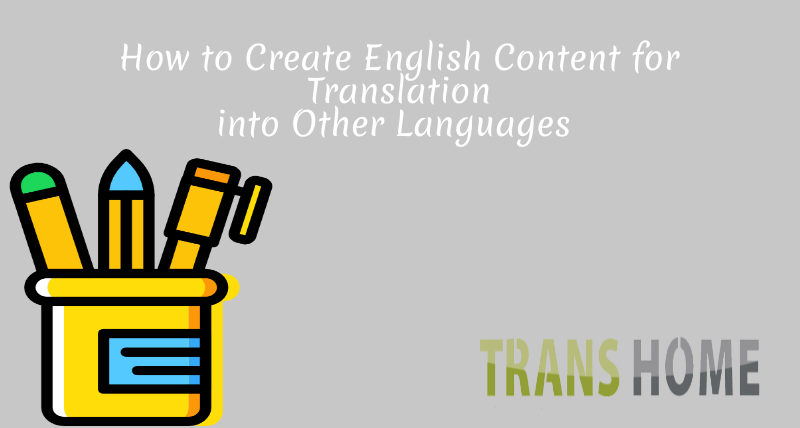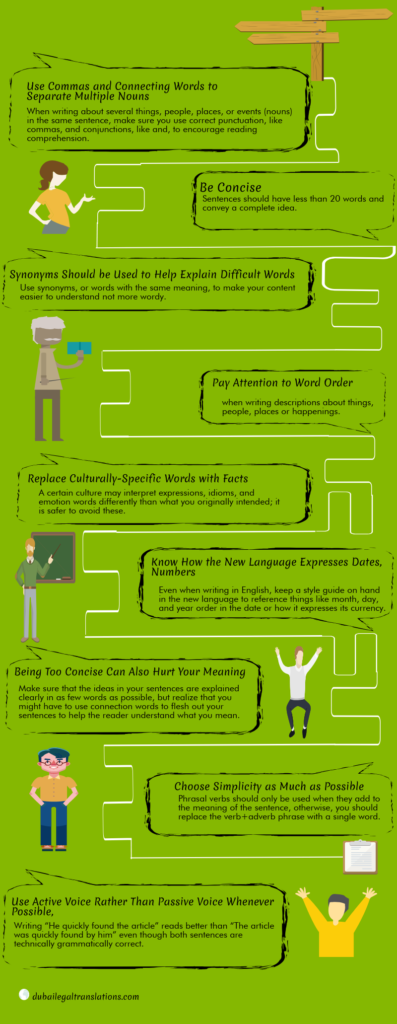
How to Create English Content for Translation into Other Languages

Use Commas and Connecting Words to Separate Multiple Nouns
➢ When writing about several things, people, places, or events (nouns) in the same sentence, make sure you use correct punctuation, like commas, and conjunctions, like and, to encourage reading comprehension.
Be Concise
➢ Sentences should have less than 20 words and convey a complete idea.
Synonyms Should be Used to Help Explain Difficult Words
➢ Use synonyms, or words with the same meaning, to make your content easier to understand not more wordy.
Pay Attention to Word Order
➢ Word order is one of the factors that can make or break a sentence’s grammar. Pay close attention when writing descriptions about things, people, places or happenings.
Replace Culturally-Specific Words with Facts
➢ A certain culture may interpret expressions, idioms, and emotion words differently than what you originally intended; it is safer to avoid these.
Know How the New Language Expresses Dates, Numbers, and Other Style-Specific Content
➢ Even when writing in English, keep a style guide on hand in the new language to reference things like a month, day, and year order in the date or how it expresses its currency.
Being Too Concise Can Also Hurt Your Meaning
➢ Make sure that the ideas in your sentences are explained clearly in as few words as possible, but realize that you might have to use connection words to flesh out your sentences to help the reader understand what you mean.
Choose Simplicity as Much as Possible
➢ Phrasal verbs should only be used when they add to the meaning of the sentence, otherwise, you should replace the verb+adverb phrase with a single word.
Use Active Voice Rather Than Passive Voice Whenever Possible
➢ Writing “He quickly found the article” reads better than “The article was quickly found by him” even though both sentences are technically grammatically correct.
Leave a Reply